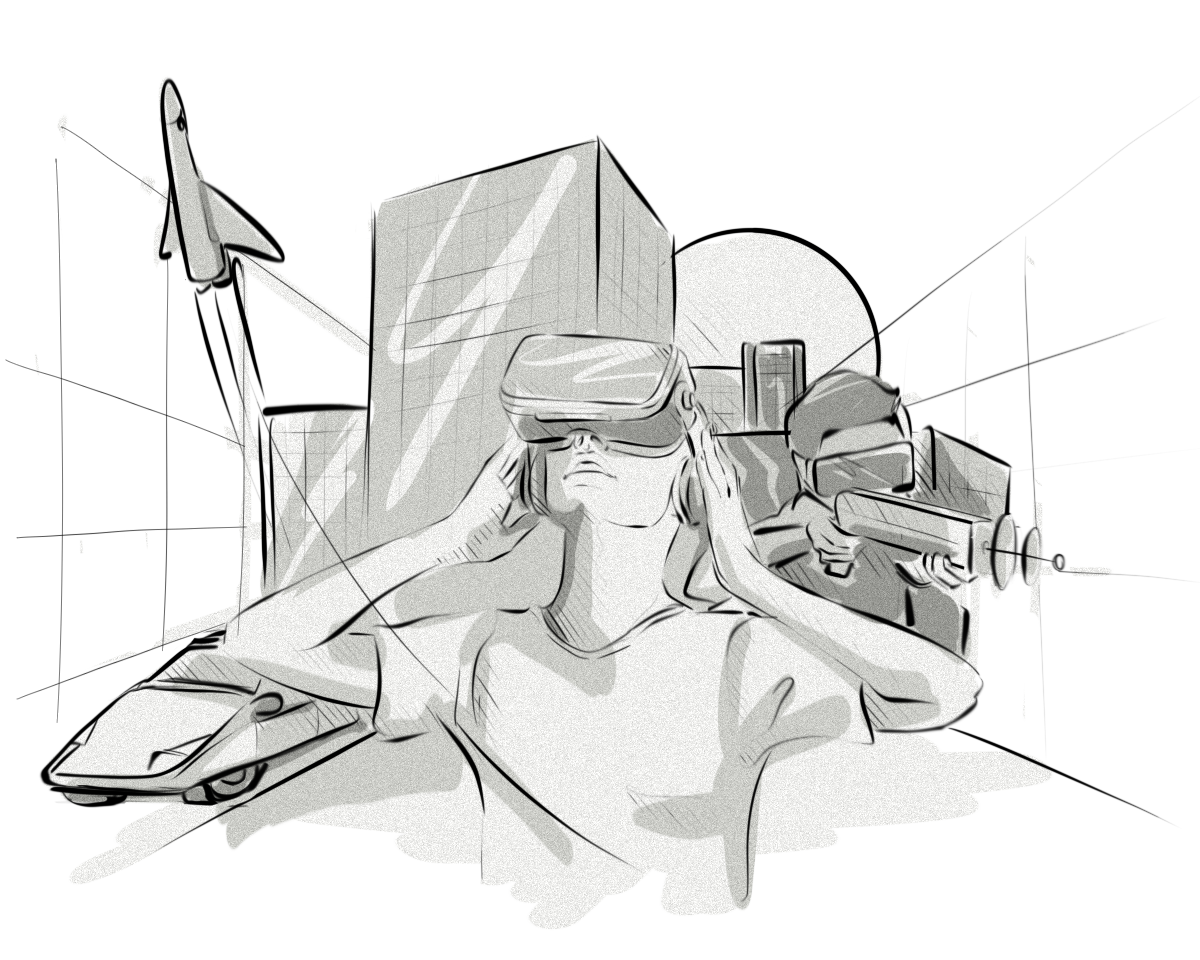The metaverse is considered the next iteration of the Internet and has the potential to generate trillions of dollars in value by 2030. It promises to revolutionize gaming and advertising with immersive 3D experiences, create new revenue streams through NFTs and play-to-earn models, and enable greater interoperability between games.
Several gaming companies constantly work on various technical developments to bring the metaverse to life. However, the question remains: how close are we to experiencing the metaverse, and why are gaming companies a key part of the metaverse?
Key Points
- The metaverse does not exist in the gaming industry yet, but several companies such as Roblox, Fortnite, Runescape, and Minecraft are working on building the foundations of the metaverse.
- The key element required for the metaverse to exist is interoperability.
- Interoperability refers to allowing users to move through different virtual words seamlessly.
- The economy of the metaverse will heavily rely on NFTs and other digital assets.
- It is predicted that the NFT industry’s revenue will have reached $3.5 billion by 2023 and will continue to grow at a compounded annual rate of 22.82% until 2027.
- Technologies that empower the gaming metaverse include: blockchain, cryptocurrency, AR & VR, artificial intelligence, 3D reconstruction, IoT, edge computing & 5G.
- Many companies are interested in investing in the metaverse for gaming and utilizing advanced technologies like AR, IoT, AI, and blockchain.
- The metaverse has the potential to transform the gaming industry by creating new opportunities for social interaction, revenue generation, and personalized gaming experiences.
The Evolution of Gaming
Prior to the emergence of blockchain-powered games, multiplayer games were already popular among players. However, blockchain has significantly transformed the way online games are played.
It has introduced capabilities to tokenize in-game items and sell them for cryptocurrency, which has amazed gamers with its potential use cases of NFTs and cryptocurrencies.
Players can either sell their assets or hold onto them until they receive rewards for achievements scored in the game.
Gamers interested in gaining real money and cryptocurrency have been particularly impressed with the success of NFT games worldwide.
The games have gained popularity, not just because of the financial returns, but also due to the realistic portrayal of actual objects and their stunning aesthetics.
The development of metaverse games is a result of dozens of years of technological advancements in the gaming industry.
The next level of gaming provokes companies to prioritize decentralized projects as the future seems to be moving forward with the decentralization approach, with players accessing Web3-based games.
Is the Metaverse Present in the Gaming Industry?
So far, the metaverse is a hypothetical vision of the next iteration of the Internet. The idea of the metaverse is to project a single, shared, and immersed 3D virtual space where humans can interact with each other by using virtual reality headsets (VR) and augmented reality (AR) glasses.
Although the metaverse does not exist in the gaming industry yet, there are some video game companies that have already started to develop the foundations of metaverse technology, such as Roblox, Fortnite, Runescape, and Minecraft.
There is an argument that the metaverse already exists in the gaming space in the form of online video games, as they provide an online community where people can interact with one another using their chosen avatars and purchase different items using cryptocurrencies, but in fact, the true metaverse is not here yet.
There is one more essential element missing: interoperability.
Interoperability will allow users to move through the different virtual worlds seamlessly. This essentially means empowering users to access the metaverse from any device and from different vendors.
Roblox’s CEO, David Baszucki, says that his company has started to craft the metaverse; however, there is still a lot of work to be done, which requires an extremely high level of innovation.
In fact, the technologies that enable access to virtual worlds, such as VR headsets and AR glasses, are already in use and are evolving quickly. It’s the other key elements of the metaverse, such as sufficient bandwidth and interoperability standards, that may take years to develop, or might never materialize.
Currently, we are seeing various gaming companies developing their individual gaming spaces, but the question is: How can different gaming companies create a metaverse that can be used by all game creators?
It’s likely they would need some kind of a hub instead of the ones used by game vendors today, like Steam and Origin, that would allow users to have access to various games in the metaverse without the need to register for each game separately.
What Are the Challenges of Gaming in the Metaverse?
There are several challenges associated with the development and implementation of a gaming metaverse, including:
- Technical issues: Building a fully functioning, interconnected metaverse is a complex and technically challenging task that requires significant expertise in areas such as blockchain technology, AI, and virtual reality.
- Interoperability: A major challenge is ensuring that different virtual worlds and games can seamlessly interact and share data. It requires developing common protocols and standards that can be used across different platforms.
- Security and privacy: As the metaverse will involve large amounts of personal data and financial transactions, ensuring robust security and privacy measures will be critical to building user trust.
- Legal and regulatory issues: Using virtual currencies, NFTs and other digital assets raises a range of legal and regulatory issues, such as consumer protection, taxation, and intellectual property rights.
- Inclusivity: The metaverse has the potential to exclude certain groups of users, such as those who cannot afford the required hardware or have limited Internet access. Ensuring that the metaverse is accessible and inclusive to all users will be important for its long-term success.
What Is the Potential of Gaming in the Metaverse?
The metaverse has the potential to revolutionize the gaming industry in several ways.
First, it can provide a more immersive and social gaming experience by allowing players to interact in a shared virtual world, creating a sense of community and connection beyond individual games and increasing engagement and loyalty among players.
Second, the metaverse can enable new revenue streams for game developers and publishers. For example, the ability to buy and sell NFTs within the metaverse can create new opportunities for in-game items and virtual real estate.
Additionally, the play-to-earn model can incentivize players to spend more time and money on games, while creating opportunities to earn real money.
Third, the metaverse can enable greater game interoperability, allowing players to bring their virtual assets and characters from one game to another. As a result, it can create a more seamless and personalized gaming experience that more accurately reflects players’ interests and preferences.
Overall, the metaverse has the potential to transform the gaming industry by creating new opportunities for social interaction, revenue generation, and personalized gaming experiences.
How Can the Metaverse Revolutionize the Gaming Industry?
Gaming in the metaverse, driven by virtual reality (VR) technology, has the potential to revolutionize the gaming industry. The opinion comes not only from gamers but also from a recent survey conducted by Globant, which states that 52% of gamers believe that the metaverse in gaming can be a game-changer for the industry.
Virtual reality (VR) technology is a key element that is driving gaming in the metaverse. It is currently a popular topic in the gaming industry and has captured the attention of gamers.
The rise of the AR/VR-based in the online gaming industry has led to a significant increase in popularity, paving the way for developing a gaming reality known as Web 3.0. The new gaming reality will enable players to transfer their characters seamlessly from one gaming experience to another.
Plenty of businesses are looking to invest in the metaverse for gaming and utilize new and emerging technologies, such as augmented reality, IoT, artificial intelligence, and blockchain, to power the games and experiences.
What Is the Future of the Gaming Metaverse?
Brands have the potential to offer a better customer experience that goes beyond a single virtual platform. By ensuring a positive and consistent experience across multiple virtual worlds, brands can establish meaningful relationships with customers who are spending increasing amounts of time online.
It also allows brands to engage with a larger audience through shared experiences.
To build a Web3 presence that allows for interoperability, brands should consider the following steps:
- Define their virtual worlds: Brands should start by defining the virtual worlds that align with their brand values and customers’ interests. It will help them choose the most suitable platforms for their business and target audience.
- Create a consistent brand experience: Brands should create a consistent brand experience across all virtual worlds they operate in. This can be achieved by using the same branding elements, messaging, and tone of voice.
- Utilize blockchain technology: Blockchain technology can be used to ensure data interoperability between different virtual worlds. Brands can use blockchain-based solutions to enable their customers to move seamlessly between different virtual worlds without losing their progress or personal data.
- Partner with other brands: Brands can partner with other brands to create shared experiences that span across different virtual worlds. This can help brands reach new audiences and create more engaging customer experiences.
- Engage with the community: Brands should engage with the community in each virtual world they operate in. This can be done by creating events, sponsoring content creators, and responding to customer feedback.
By following these steps, brands can build a Web3 presence that allows for interoperability and creates a consistent, positive customer experience across different virtual worlds.








